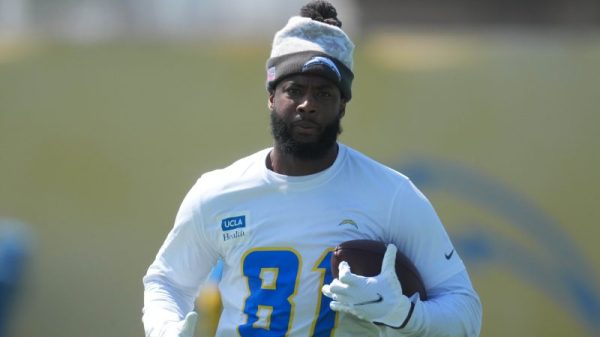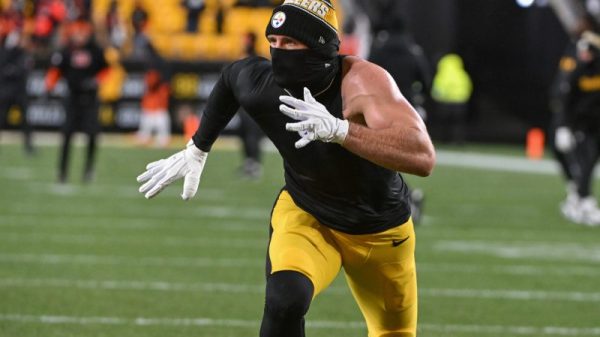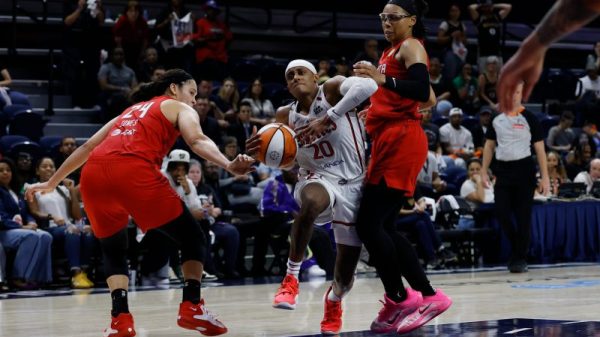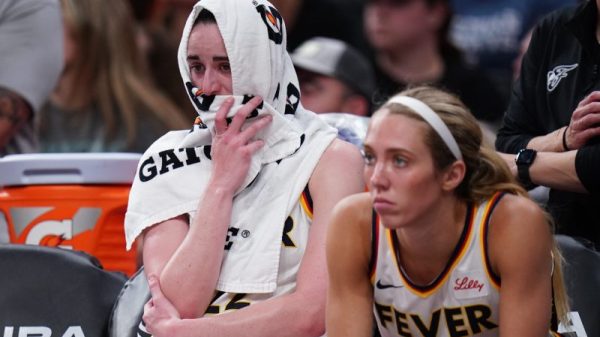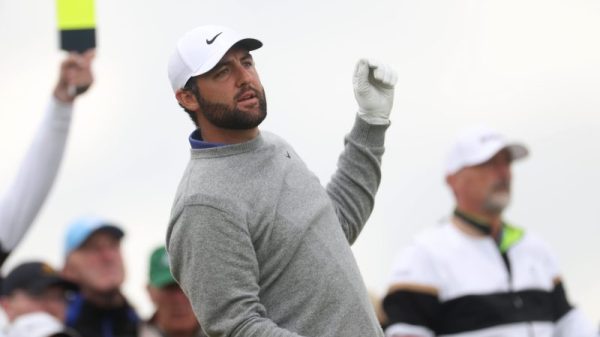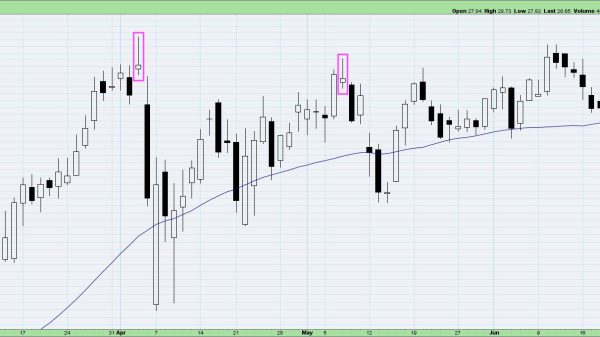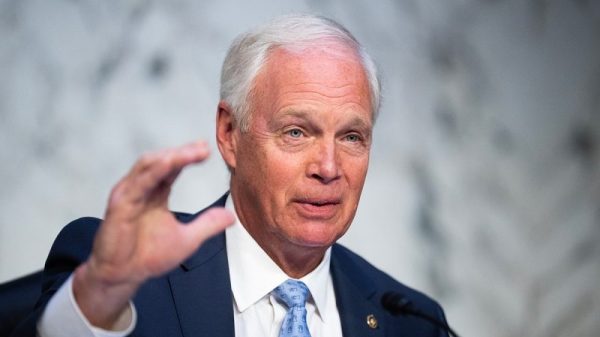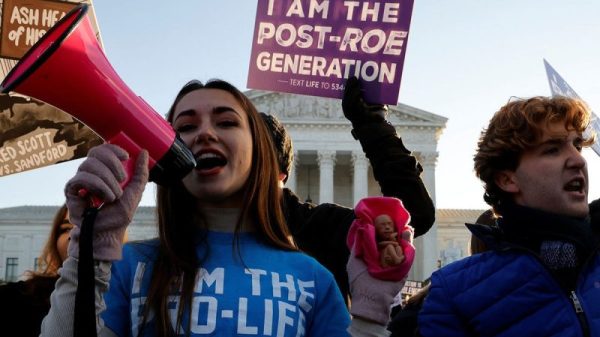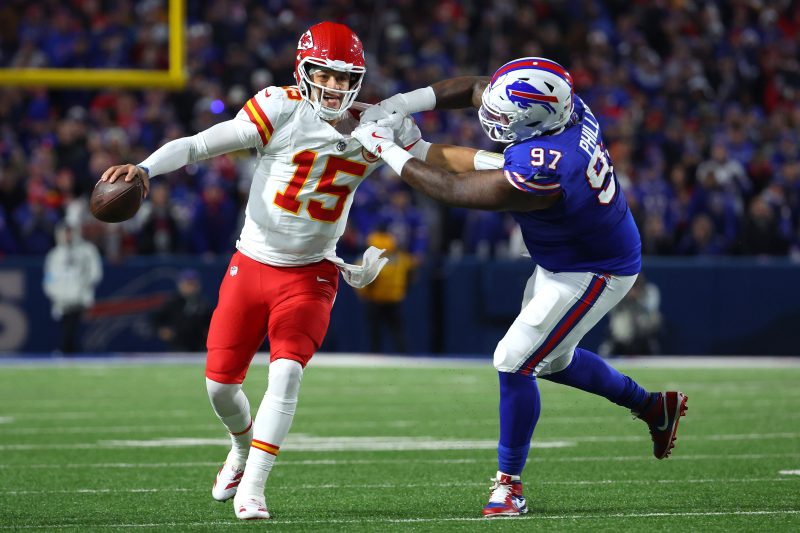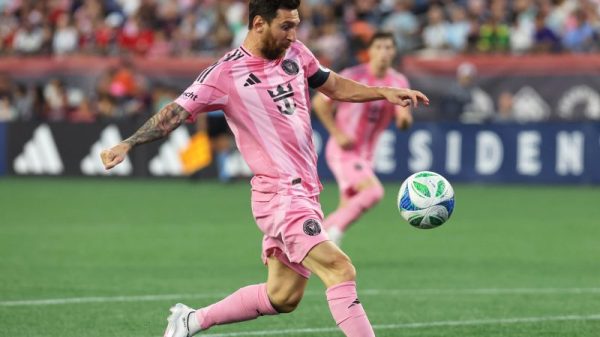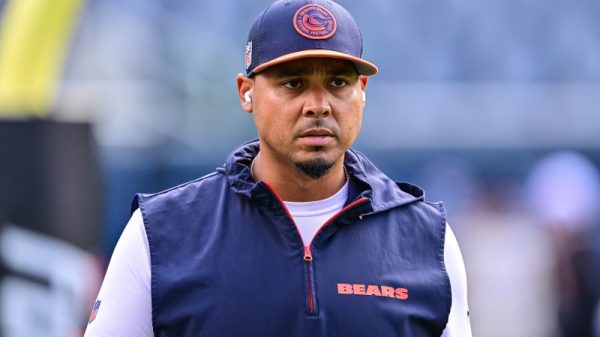At the beginning of each NFL season, it can be difficult to imagine widespread challenges to the incumbent contending class. But when it comes to the postseason field, change is a given.
Last season might have been more static than previous campaigns were, with only four playoff newcomers – two in each conference – shaking things up. But that number has been the minimum number of fresh entrants for every season since 1990, with as many as eight swaps in 2022, for example.
Will 2025 produce another relatively muted shift in the postseason landscape, or are things ripe for a shake-up? With training camps open, here’s our look at last year’s playoff teams, ranked from most to least likely to return to the playoffs.
1. Buffalo Bills
With the core returning for a team that yet again saw its Super Bowl shot slip through its hands, Buffalo belongs near the top of any preseason power rankings. What sets the Bills apart in this exercise, however, is the vise grip they have on the division. In claiming the AFC East for the fifth consecutive season in 2024, Josh Allen and Co. managed to become the first team since the 2009 Indianapolis Colts to seal a division crown with at least five weeks remaining. With the gap between them and a trio of also-rans as wide as ever, the Bills have a sizable margin for error in the event of any slippage. Still, for an organization that has notched at least 11 wins in each of the last five years, Buffalo fittingly seems better prepared to weather a storm than most other teams.
2. Philadelphia Eagles
In the last 10 years, only two teams – the 2016 Denver Broncos and the 2022 Los Angeles Rams – failed to reach the postseason the year after winning the Super Bowl. The Eagles don’t appear particularly liable to join them. Of course, there are no guarantees about Jalen Hurts’ health, as quarterback entropy drove both of the other teams’ rapid downfalls. But with an offensive front that remains the league’s standard-bearer and an overall level of depth seldom seen elsewhere in the league, Philadelphia has become the embodiment of stability. Some new starters and young players will have to step up in key spots, particularly in a pass rush that lost Super Bowl standouts Josh Sweat and Milton Williams in free agency. But as the Eagles’ opponents learned last season, it’s difficult to find a weak point that can be consistently and repeatedly exploited.
3. Baltimore Ravens
Since Lamar Jackson was drafted in 2018, the lone season in which Baltimore failed to make the playoffs came in 2021, when a calamitous spate of personnel losses – 25 players landed on injured reserve at some point – and a brutal run of close losses in the final weeks did the team in. Maybe there’s cause for concern there for a group that benefitted from uncommon injury luck last season, with the Ravens easily having the fewest adjusted games lost in the metric developed by FTNFantasy’s Aaron Schatz. But even a regression to the mean might not be enough to stop a group that returns nearly every starter from last year’s 13-win crew. The top-ranked offense shows no signs of slowing down, and the addition of Jaire Alexander gives Baltimore a deep and formidable secondary capable of keeping up with the AFC’s most prolific passing attacks.
4. Kansas City Chiefs
After the two-time defending champions ran their win streak in one-score games to 17 – boosted by a 12-0 mark last season, including the playoffs – before a surprising Super Bowl smackdown, many delighted in what they saw as comeuppance for an imperfect squad. But despite the inherent luck involved, Kansas City’s unparalleled aptitude in tight contests might be indicative of this group’s ability to find the narrowest of edges, even when dealt with other setbacks. Regardless, the Eagles’ triumph very well could prove no more indicative of a downfall than the Buccaneers’ Super Bowl 55 rout over Patrick Mahomes and Co. did. The outlook up front shouldn’t be seen as fully settled with Jaylon Moore stepping in at left tackle, but the passing attack won’t merely have to scrape by with Rashee Rice and Marquise ‘Hollywood’ Brown healthy again after missing the overwhelming majority of the season. The nine-time defending AFC West champions could face some actual heat in the division, but, barring catastrophic injury, the odds of a full-blown tailspin seem remote.
5. Tampa Bay Buccaneers
Perhaps their contending credentials aren’t quite as strong as the NFC’s other returning playoff entrants. But the four-time defending NFC South champions don’t have as treacherous of a path to the postseason as their competition. While Liam Coen’s departure might still sting, there’s a foundation in place for new coordinator Josh Grizzard to maintain the pace for an offense that ranked fifth in expected points added per play. All-Pro left tackle Tristan Wirfs’ early-season absence due to an offseason knee surgery, however, looms as something that could trip up the team out of the gates.
6. Detroit Lions
On one hand, Detroit is due a hefty dose of respect after leading the NFL in point differential (+222) despite an almost historic level of bad injury luck on defense. On the other, it will be exceedingly difficult for the Lions to reprise their 6-0 finish within a division that has only gotten even more cutthroat, with the loss of coordinators Ben Johnson and Aaron Glenn threatening to drain the institutional advantage that had allowed the organization to push past so many hits elsewhere. Dan Campbell should be able to retain some semblance of stability on both sides of the ball given the familiarity that John Morton and Kelvin Sheppard have with his operation, so don’t count on a collapse. But with plenty to still sort out and the formerly dominant offensive line in a bit of flux following linchpin Frank Ragnow’s retirement and Kevin Zeitler’s departure, things could get a bit wobbly in the challenging early portion of the schedule before things smooth out.
7. Los Angeles Rams
Not only were the Rams the only team to claim a division via tiebreaker, they also were the lone playoff team to post a negative point differential (-19). But with Davante Adams touting his rejuvenation upon his arrival to Los Angeles and a promising defense continuing to coalesce, this is a team that is clearly on the upswing. There are no guarantees in the NFC West, which is one of the few divisions with four teams legitimately capable of finishing first in 2025. But a team that didn’t look outmatched by the Eagles in the divisional round remains the class of the group for now, and the Rams should be a leading contender for a wild-card spot even if they’re knocked from their perch. Health issues along the offensive line, however, could prove problematic, as left tackle Alaric Jackson’s status remains unclear as he again deals with blood clots and right tackle Rob Havenstein is recovering from cleanout procedures on both shoulders.
8. Denver Broncos
Sean Payton’s crew last season beat out even the most optimistic timelines for a turnaround, ending what had been the NFL’s second-longest active playoff drought despite carrying a record $89 million in dead cap charges. But Denver’s 1-6 record in one-score games highlighted a clear avenue for growth. Threatening defenses downfield more often no doubt will be a vital step in the Broncos establishing they can compete with the AFC’s best given that just two of their 2024 victories came against a team that finished with a winning record – and one was against a Kansas City team resting its starters in Week 18. But Bo Nix should have much more help thanks to JK Dobbins and rookie RJ Harvey invigorating an inefficient rushing attack, with the latter joining ‘Joker’ tight end Evan Engram in frequently creating mismatches in the passing game. An already superlative defense could reach new heights if free-agent additions Dre Greenlaw and Talanoa Hufanga stay healthy, and the offensive line should continue to set the tone up front.
9. Green Bay Packers
When Jordan Love and the Packers’ passing attack saw an upward trajectory inverted in a trying end to the 2024 season, a consternation followed. And while Green Bay didn’t break its 23-year first-round receiver drought merely for the amusement of fans on hand for this year’s draft, maybe the offense’s ills have been somewhat overstated. Love’s various injuries no doubt inhibited the promising passer and also necessitated a more run-heavy approach. If the Packers can open things back up and shake the drops that plagued the receiving corps throughout the season, returning to the playoffs for the sixth time in seven years under Matt LaFleur shouldn’t be much of a problem. But a defense that still lacks a consistent pass rush and has a tenuous outlook at cornerback could be troublesome.
10. Minnesota Vikings
After remaking its fronts with three new starters on the interior offensive line and two more on the defensive front, Minnesota boasts what is one of the league’s most well-rounded rosters. Why, then, would a group that won 14 games last season and nearly claimed the NFC’s top seed be placed below so many other teams on this list? For as much as it’s clear about an otherwise proven collection of talent in Minnesota, the installation of J.J. McCarthy as the starting quarterback still leaves this team as somewhat of a mystery. To be fair, general manager Kwesi Adofo-Mensah has done an outstanding job of setting up a support system for the 2024 first-round pick to thrive in this transition, and coach Kevin O’Connell can cater to McCarthy’s strengths with a heavy dose of intermediate targets and play-action throws. But when it comes to certainty, there’s none guaranteed from a player whose pro experience amounts to 19 preseason snaps.
11. Washington Commanders
Maybe this seems disrespectful for a team that made the NFC Championship Game far sooner than anyone could have expected. But plenty of things broke exactly right for the Commanders last season, including a Hail Mary finish and an 8-2 mark in one-score games. Jayden Daniels’ rare poise in the face of pressure should prove to be a major asset for the reigning Offensive Rookie of the Year in avoiding a sophomore slump, and Washington’s bold moves to add wide receiver Deebo Samuel Sr., left tackle Laremy Tunsil and first-round right tackle Josh Conerly Jr. should ease the burden that the quarterback shoulders for the attack. But a much more imposing schedule and an array of fortuitous bounces unlikely to be repeated (see: Washington’s place atop NFL data scientist Tom Bliss’ ‘luck dashboard’ below) make the Commanders look ripe for a regression.
12. Houston Texans
There’s little question that the Texans are the least stable of last year’s division winners. Bringing in Nick Caley as offensive coordinator could get Houston back on steadier ground, as C.J. Stroud is being granted more freedom and control in shaping the attack on a play-by-play basis. But the scheme might have to do a fair amount of compensating for a still-shifting offensive line that can’t guarantee improvement after allowing Stroud to be sacked 52 times. The uninspiring competition in the AFC South might be the most critical element in preventing Houston from ranking last, though DeMeco Ryans’ havoc-inducing defense also provides a nice buffer as the Texans figure things out on the other side of the ball.
13. Los Angeles Chargers
As the Bolts lean further into the identity of a typical Jim Harbaugh production, the no-frills approach emphasizing ball control seemingly gives Los Angeles a somewhat elevated floor. But unsettled interiors on both lines could prevent the team from finding its highest form. The Chargers are placing an undue burden on 34-year-old Khalil Mack to carry the pedestrian pass rush, and the receiving corps needs someone to emerge to ease the pressure on Ladd McConkey, who accounted for 197 of the team’s 242 passing yards in its blowout wild-card loss to the Texans. Squeezing out overmatched opponents by minimizing turnovers and playing efficiently on both sides of the ball should serve Los Angeles well once again. But that might not cut in the AFC West, and the Chargers could be in for a rough time if last year’s top-ranked scoring defense takes a step back.
14. Pittsburgh Steelers
Entering a partnership based off mutual need rather than true compatibility can make for a questionable commitment – particularly when it entails rerouting the course of an entire franchise. For better or worse, however, 41-year-old Aaron Rodgers and the Steelers are now hitched, with an organization embracing the volatility that comes with all of its new pieces as it seeks its first postseason win since the 2016 campaign. Rodgers is hardly a natural fit for Arthur Smith, and a fruitful marriage likely will require the offensive coordinator to adjust to the four-time NFL MVP’s predilections rather than the other way around. But Pittsburgh has already seen how things can go awry with Rodgers after his stint with the Jets, and there’s no guarantee that the signal-caller can leave behind the many issues that plagued him. With the Ravens remaining the class of the division and the rival Cincinnati Bengals more than equipped to give them a push, the Steelers can’t afford to waver in what could be a heated AFC playoff race.

